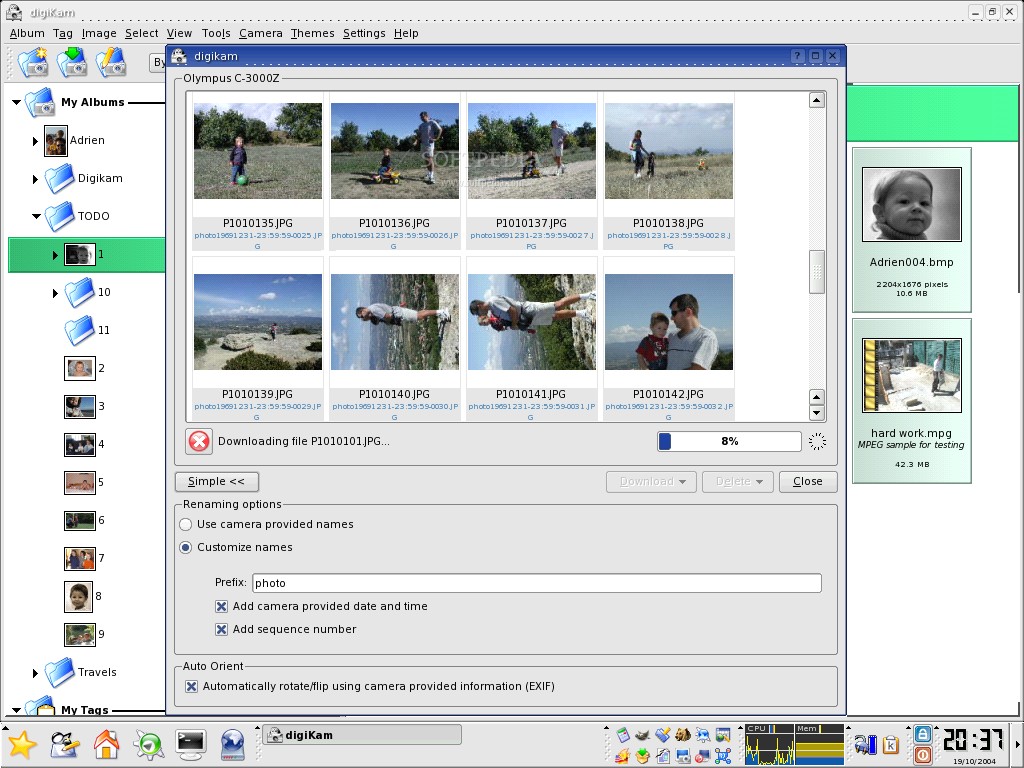
select a geotagged image and hit M and the image's group is selected.Maps (in center) show geotagged images as groups showing image count, which divide as you zoom in.geo-location tool is very cool, with marble or google maps, show two maps, drag images to the map.first/last image with bottom right buttons or home/end.rating with 1-5 stars and 9 colours, 3 flags.search tagged photos -click on tag filter at left sidebar (clipboard icon) to search any tag (or multiple) through all albums, or from the filter at right sidebar to search any tag of the selected album.assigning tags -with right-click select RECENT or from the caption/tag side panel -can just select tags and then select other images (or press Space if in View mode) and tags are applied (with auto apply enabled).converting images (batch) you can't send to a "new" dir that hasn't been made (compare Picasa!).

the dialogue from resize on left does not include quality bar but the one from plugins does!.need to have ability to make any plugin on the drop down menu into a button -at left.folders are treated like as with a file browser, can move etc.batch conversion and resize dialogues can run at the same time as each other.with kipi-plugins there are many enhancing tools.This was written a few years back, so there might be some inaccuracies now as I haven't used any of these app's since. Choose an album, select “auto create”, or click “New Album” to make a new one.Image enhancing and tagging options in Linux Back in Digikam, click “Yes” in the dialog box.Ħ. If you are already logged in, Facebook will tell you that you can close the window and return to Digikam.ĥ. It will open your web browser and ask for your Facebook login. To use Digikam to upload Facebook photos, do the following:Ĥ. People who use Facebook often want to share their photos, and Facebook has a complete photo album component with albums, tags, and other common features. By default it relies on a Java-based upload application that does run well on Linux from my experience. Add tags for the images or click “Export Application Tags” to use Digikam’s. Choose the album you want to use or create a new one.ħ. It will open your web browser and ask for your Google login. If you are already logged in, go back to Digikam.Ħ. Select the album and images you wish to upload.Ĥ.


When you first start it, it will pop up a window asking for your pictures directory. Once selected, it will remember that selection and always work within that directory until you change it. If you are preparing to use Digikam for the first time, you need to tell it where your photos are stored. I am operating under the assumption that you already have accounts on the services you want to use. If not, you will need to register and activate whichever accounts you want before you proceed. All three support photo plugins used by Digikam. This makes uploading photos quick, easy, and painless. Three popular services that Digikam can handle are Flickr, PicasaWeb, and Facebook. The first two are social photo sites, and the last is a social networking site. With Digikam, you can import photos from your digital camera or flash memory, organize and tag them, rate them, edit them, and export them to various services or custom galleries.
Digikam applying recursive tag software#
Digikam is a free and open source photo management software package for KDE. Many KDE-based Linux distributions either come with Digikam installed or have it available in their repositories.


 0 kommentar(er)
0 kommentar(er)
